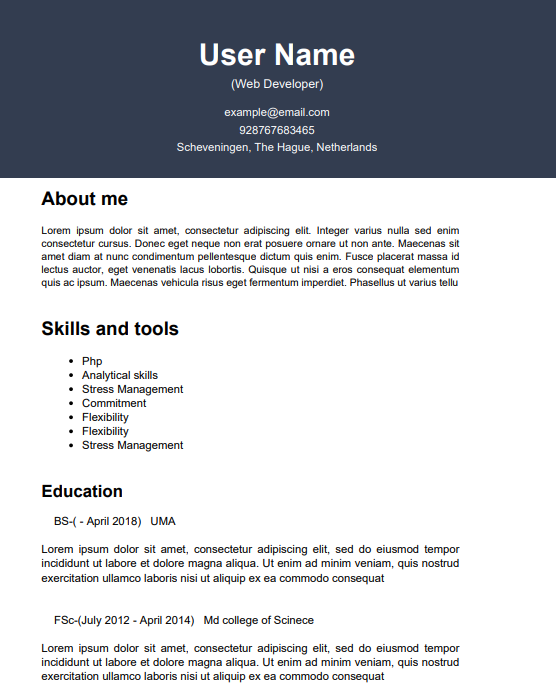Talent Identification, Scouting and Athlete Development – Part 3
In the second part of our article series, we talked about the difference between youth football from adult football and the factors affecting performance measurement and performance in youth football.
In the last part of our article, we gave a small example about the usage of SSGs in performance measurement and talent identification.
In this part of our article, we will look for an answer to the question of how to train young athletes correctly without the risk of injury. In addition to the studies on this, we will examine the Long-Term Athlete Development Model, which is one of the most important models used in athlete development.
Player development is a very long and very complicated process. In this process, it is important to train the player without causing them to quit from the game and to provide sports-specific skill acquisition and continue their development.
It takes great skill to balance the two. Here, besides team planning, individual planning is also of great importance. Correct load and time planning both support the player’s development and minimizes the risk of injury.
We examined the subject of planning the training load in our article “Workload Management in Football”. If we want to remember with a sentence, among these measurements were heart rate, measurement of lactate in the blood, measurements made using various technological devices and Rate of Perceived Exertion, which is the most common and popular use.
These measurement techniques are used in youth football as well as in adult football. The main difference here is, as we mentioned above, taking an actor from a child age and bringing them to the professional level is a very long process that needs to be planned in detail.
Therefore, using only these measurements may not be sufficient for the participant individual. Because in this process, many skills that need to be developed come into play. There are many factors that need to be developed, from physical skills to mental skills, from technical skills to tactical awareness.
The critical and main goal here is to correctly set the age ranges in which we can give these skills to the participant. To explain more, teaching tactical awareness to the participant at what age provides the most optimized development in the person?
The best answer to this question is the Long-Term Athlete Development Model, which we mentioned in the introduction.
LONG TERM ATHLETE DEVELOPMENT MODEL
The Long-Term Athlete Development Model, which consists of at least 7 stages, focuses on which skill should be given to the participant at which age range. LTAD Model considers it appropriate to train according to biological age rather than the chronological age of the individual.
It is a model developed by Canadian Sports Centers in order to optimize the development and maturation of the individual and to determine the critical periods of adaptation to training. Another purpose of the development of this model is to reduce dropout rates after the participant does not stay away from sports and to continue active life for health after professional sports life.
We will detail the 8 stages of this model, but before that, it is useful to define and separate various concepts because knowing these concepts is an important part of understanding this model. At the beginning of these concepts are adaptation, trainability and Selye’s General Adaptation Syndrome. Adaptation can be defined as the morphological changes experienced in the body and in organisms through stimuli.
Trainability refers to the faster adaptation to stimuli and the genetic endowment of athletes as they respond individually to specific stimuli and adapt to it accordingly.
Finally, General Adaptation Syndrome, developed by Selye, is the pattern formed during the body’s response to stimuli given by the stressor.
 You can see 7 stages of long-term athlete development. We will now detail these phases one by one.
You can see 7 stages of long-term athlete development. We will now detail these phases one by one.
1st PHASE: ACTIVE START
In male and female individuals, this is the only stage that the age range does not differ. All individuals aged 0-6 must be present.
The main purpose here is to make physical activity a part of daily life in children.
It is very important to teach and practice movements such as running, jumping, turning, throwing, catching and kicking, especially in this phase when simple motor skills begin to be learned. In addition, teaching the child to fall provides a great advantage for the future.
2nd PHASE: FUNdamentals (Males:6-9, Females:6-8)
The stage in which the skills learned during the active beginner phase is combined with gymnastic movements to teach agility, balance and coordination.
The exercises that can be done with bodyweight are intense and it aims to give the individual enough flexibility and then to set the correct range of motion.
As the name implies, these exercises should be provided with games and in a safe environment without boring the participants.
The development of the sportive skills of the participant while having fun should be the primary goal.
3rd PHASE: LEARNING TO TRAIN (2nd PHASE of FUNdamentals) (Males:9-12, Females:8-11)
This phase is one of the most important phases in the model. It can also be defined as the continuation of the previous phase.
At this stage, gender and individual differences are also taken into account, as growth comes into play significantly. In addition to body weight, strength development is continued with light loads. At the same time, mental, cognitive and emotional skills begin to be developed at this stage.
Training tracking and monitoring can be started at this stage.
4th Phase: TRAINING TO TRAIN (Males:12-16, Females: 11-15)
This is the stage where especially sport-specific exercises are more involved. During this phase, the growth rate peaks in both sexes (PHV). In this process, the rapid growth of bones can cause stress in certain tissues.
At this point, training technique, improving flexibility and determining exercises that will positively affect posture should be the primary goal.
In connection with these, it has now become necessary to follow up and monitor the individual’s training. In addition, the introduction of periodization makes training tracking even more important. Another important point is the intensification of anaerobic training in these age ranges.
Especially for girls between 11 and 13 for boys, between 13 and 16 years of age, speed development has a significant correlation with this training. The frequency of weight training is increased, contributing to this development.
5th PHASE: LEARNING TO COMPETE (Males:16-18+, Females:15-17+)
This phase is the specialization and competition phase. It is the stage where training for competitions becomes more frequent. It is one of the stages that need attention to the development and course of mental, cognitive and emotional factors.
6th PHASE: TRAINING TO COMPETE (Males:16-23, Females:15-21)
At this stage, while the physical development of the individual continues, her or his mental and psychological support and development should continue due to the stress level in the competitions. Periodization should now be used completely.
The monitorization and training tracking for the competition is also of great importance.
7th PHASE: LEARNING TO WIN (Males:20- 23+ YAŞ- Females: 20-23+ )
At this stage, the individual is now fully athlete. All the physical, mental, technical and tactical resources of the participant should be maximized.
All of the performance measurement and monitoring methods we mentioned in our Workload Management in Football article are used completely at this stage.
8th PHASE: ACTIVE FOR LIFE (Males: Any Age, Females: Any Age)
Participants have to draw a life that they can continue after their professional sports life. This phase is critical for the individual after competitions that take a very important place most of their lives.
Although it is a difficult phase for the individual, there are many opportunities for her or him such as coaching, coaching, mentoring.
We detailed the phases of the LTAD Model above. In the next article, we will discuss the naming and categorization of these stages according to age groups in football. But before that, we will discuss the correct quantification of training and minimizing the risk of injury in the players as we mentioned in the introduction.
TRAINING QUANTIFICATION AND INDIVIDUALISATION
We will consider the amount of loading and individualization according to the Long-Term Athlete Development Model. As we mentioned above, in the first two stages, the aim is to make the participant love sports and teach them basic skills with games.
In this context, it is the most appropriate option to start determining the amount of training and individualization in the third phase, the Training to Train phase. According to the competitions and training, the monitorization of the athlete starts at this stage.
Especially, attention should be paid to the training track according to the player’s position and physiological character. According to these structures, the training of the player is individualized.
Apart from team training, the characteristics that the player is missing or that need to be developed according to his or her position are trained. There are also important studies highlighting this issue. In a study conducted in the youth team of a Spanish club, a serious decrease in the performance of a player playing in the forward position was observed.
Performance, medical, psychological and dietetic tests were applied to the player to find the underlying cause of this performance decrease.
As a result of these tests, no health problems were found in the player, but as a result of the Yo-yo intermittent endurance test, it was found that the aerobic endurance of the player was much lower than expected. In this context, a special 7-week program was applied to the player.
This special program was implemented under the supervision of the trainers. This training was planned in a way that would not interfere with team training.
This ensured that the player did not fall behind in the team. In the Yo-yo Intermittent Endurance test conducted at the end of this period, it was seen that the aerobic capacity of the player increased by 32% compared to the previous test. As a result of this study, it has been proven that individualization in training provides an increase in performance for the athlete.
It is not possible to put the practice in this example into effect throughout the entire academy. However, it is appropriate for players of the same type to practice in groups to eliminate their deficiencies.
Apart from team training, applying these exercises with small weekly periods provides a significant increase in the match performance of the players.
MINIMISING THE INJURY RISK
Football consists of long-running leagues and competitions. Especially since the 4th phase of the LTAD Model, a significant part of the lives of the players in training and competition.
Especially after players reach the elite level, they can be included in the competition schedule that exceeds 60 games annually. Such frequent and intense training and match traffic causes serious stress on the players and significantly increases the risk of injury.
Injuries also affect the player negatively both physically and psychologically. In this context, preventing injuries and minimizing risk is of great importance for players. Accordingly, with the development of monitoring and training follow-up, various injury prevention programs have started to be developed.
The most important of these is the warm-up program that includes 10 exercises developed by Fifa’s Medical and Research Center (F-MARC). This program especially includes core stabilization, eccentric training of thigh muscles, proprioceptive exercises, dynamic stabilization and plyometric exercises.
The efficiency of this program has been proven by the data obtained as a result of various studies and the feedback from the players. From the link below you can see the program developed by F-MARC more detailed.
https://newcastlesportsmedicine.com.au/wp-content/uploads/2017/08/3.-11-poster.pdf

